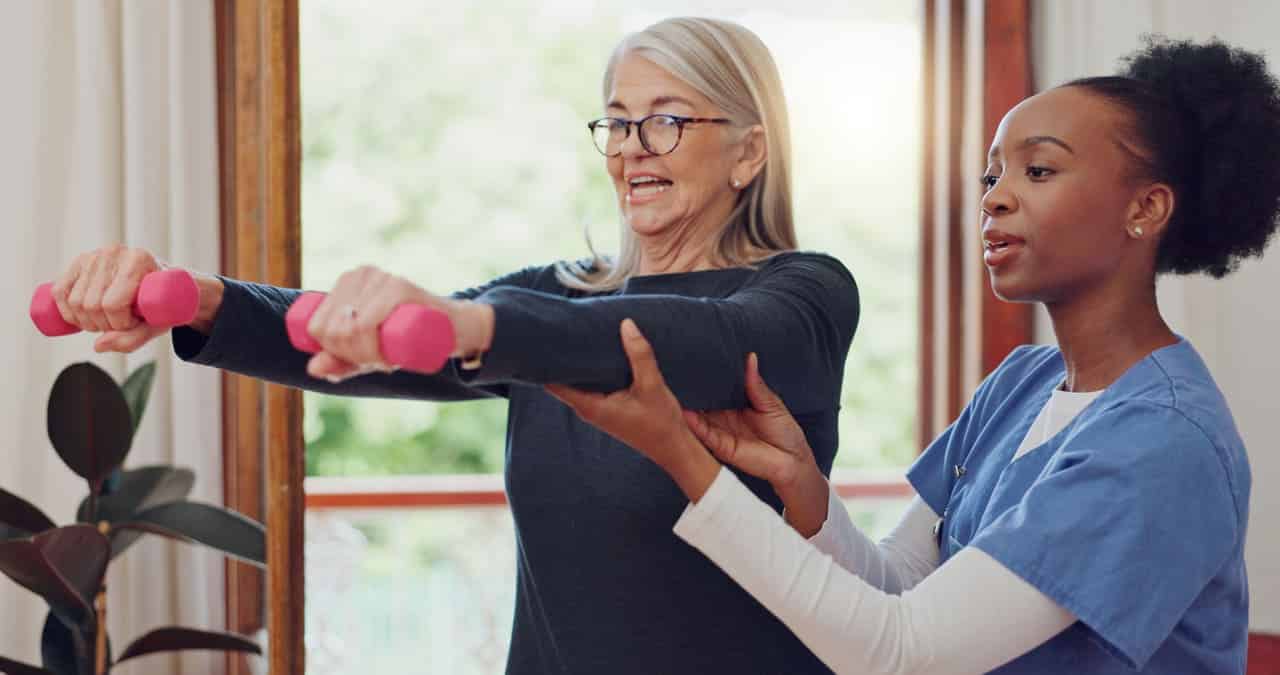Aging doesn’t mean we should stop living or doing the things we enjoy that make us healthier, better versions of ourselves. Contrary to popular belief, seniors can and should still do weightlifting, especially if they’re not suffering from any diseases or injuries that prevent them from doing so.
Having said that, as we age, our muscle mass and strength tend to decrease, making it more difficult to perform the way we used to. Not only in the gym but in other aspects of life as well, and one way to combat that is just to keep training, with small differences that make it safer.
In this article, we’re going to take a deeper dive into the measures you have to take as an older person in the gym that will make your sessions not only more effective but also risk-free. So, if that sounds like something you might be interested in, then keep on reading.
What To Do To Lift Weights Safely as a Senior
Even though it’s not unsafe to lift weights as a senior, there are still some tips to follow in order to ensure that you’re not risking injuries during every workout.
Use Proper Accessories
As you get older, the seemingly little things such as wrist wraps, a good weightlifting leather belt, and proper shoes start to matter more and more. All of these accessories that you could slack on or even leave behind when you were younger are now a key part of training safely. Having wrist wraps will protect your wrists from injuries as they help maintain them in the proper position, even as you’re lifting, and having comfortable, proper shoes ensures that your knees and ankles will avoid any possible damage as well. Last but not least, weightlifting belts are one of the best ways to get more support for your lower back – an area of our bodies that typically gets injured as we age. These belts give your body extra stability and protection as they help stabilize the spine and redistribute the force evenly throughout your core – all of that results in a reduced risk of injury and less lower back pain.
Warming Up
If you used to skip the warm-up when you were younger, well, it’s time to break that habit and start religiously incorporating it before every session. A warm-up doesn’t have to last forever, nor should it be extremely difficult – going for 5-10 of easy cardio and active stretches is usually more than enough to get your blood flowing and your body going. The main job of the warm-up is to get our hearts pumping, our blood going, and our muscles and joints activated so that they’re ready to start exercising.
Even More Focus on Form and Technique
As a young person, you can afford to slack off here and there when it comes to proper form and technique, and it typically doesn’t end up costing you anything as long as it doesn’t turn into a long-term habit. However, as you get older, the emphasis on proper form and technique should increase to the point where you should be certain you’re using the correct muscles for every exercise, and you’re not putting your joints and tendons in awkward positions. Improper form often leads to added stress on the joints and the tendons, which easily turns into different kinds of strains, sprains, and other injuries.
Opt for Lighter Weights
As you get older, your strength decreases, and it gets harder to do the same exercises with the same weight while maintaining good form. That’s why it’s vital that you always use weights you can easily lift with proper form and that you’re not doing any ego lifting. It’s good to remember that unlike when you were young, over time, your goal will be to maintain the kind of weights you can lift and not to increase them – your body is simply unable to gain strength the same way, and so all you’re doing is preserving the muscles you had.
Be In Tune With Your Body
The good old mantra of hustling hard and pushing through the pain should be gone and forgotten as you get into the later years of your life. At that point, it’s time to start paying attention to all of the signals your body gives you and to listen to them. If you’re feeling tight and sore, instead of pushing through another session, maybe it’s a good idea to rest and do some light activities such as yoga or walking.
In Conclusion
Working out as a senior is definitely recommended, and it brings many benefits – not only physical but mental ones as well. So don’t be afraid to continue with your exercise routine – just make sure you’re striking to the safety tips and being extra careful with your body.










![Home Renovation Guide [2025]](/app/uploads/2021/04/design-hacks-1-378x300.jpg)
